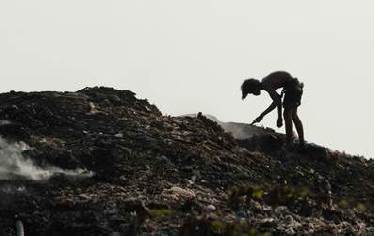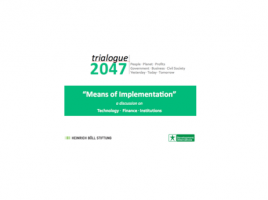Sustainable Consumption and Production: The Story So Far
Burgeoning consumption and the corresponding exploitation of our planet’s finite natural resources have largely contributed to the sustainability problems the 21st century faces. The creation of such an ‘accumulation economy’1 has not only put ecological services at risk but also poverty alleviation and development gains, undermining present and future human and planetary welfare.
A part of the global development agenda for over two decades2, Sustainable Consumption and Production (SCP) is a powerful response to these unprecedented challenges. The most commonly accepted definition of SCP is ‘the use of services and related products which respond to basic needs and bring better quality of life while minimising the use of natural resources and toxic materials as well as the emissions of waste and pollutants over the life cycle of the service or product so as not to jeopardise the needs of future generations’.3
It must be pointed out here that SCP does not simply imply consuming or producing lesser goods and services. It is about adopting different consumption and production patterns that are more efficient and less resource intensive. Looking at both the demand (consumption) and supply (production) side, SCP envisions well-being for both – people and the planet.
 Mounting Unsustainable Consumption
Mounting Unsustainable Consumption
Despite being designated as one of the overarching objectives of sustainable development, the progress on the SCP front has been rather ponderously slow. The‘add-on’ 4 like treatment of SCP is a result of poor political will, short-sightedness of policy discourses and a considerable lack of its integration with other areas.
In this sense, 2015 is in the making of a historic year, with adoption of a new global agenda in the form of 17 Sustainable Development Goals (SDGs). The Open Working Group (OWG) has tried to create a universally relevant and transformative global development agenda in the form of 17 goals for a sustainable future. OWG has not only created a stand-alone goal (goal 12) on SCP but also tried to inter-weave it with the other SDGs.
The attempted linking of Goal 12 with the other SDGs and 10-Year Framework of Programmes on SCP will ensure treatment of social-ecological-economic systems as integrated parts of a whole system rather than as silos. However, putting aside this mainstreaming of SCP, laudable as it maybe, the real question is ‘how to implement?’ given the complex web of systemic issues.
To begin with, the shift to SCP will demand a deeper understanding of not only how (including the why) we produce, distribute and consume our products but also how we organise our societies, international and national policies and our everyday lives. It is about creating a leapfrog in our actions, currently limited to technology tweaks, recycling or promotion of green products. Akenji & Bengtsson5 rightly point out the need for the SCP framework to address ‘social and cultural aspects that facilitate and constrain production and consumption patterns’. This allows the SCP targets to be aligned to a country’s belief systems and development agenda, circumventing any conflict that may undermine social cohesion. Such resonance along with an enabling policy framework will help in ‘mobilising a broader coalition of actors’ 6 (such as citizens, businesses and civil society) towards building partnerships and collaborative action.
The movement towards SCP systems needs to be fully exploited by designing a robust monitoring framework with a comprehensive set of indicators, giving the SCP targets teeth. UNEP7 has proposed a set of indicators that can be classified into six domains (1) scale of resource use, (2) decoupling, (3) environment impact, (4) technology and lifestyles, (5) financing and investing for SCP and (6) policy support for SCP.
The integration of SCP in SDGs framework is a step in the right direction. Realising SCP systems will fulfil not only the aspirations of today’s generations, but also the hopes and dreams of future ones. It is time to make this paradigm shift. q
Mandira Thakur
mandirathakur@gmail.com
Endnotes
1 Common Action for United Nations, n.d., Addressing Sustainable Consumption and Production in the SDGs
2 United Nations Conference on Environment and Development, World Summit on Sustainable Development, Rio+20, and the High Level Panel (HLP) of Experts on the post-2015 development agenda, etc.
3 Oslo symposium, 1994
4 Le Blanc D., 2014, Towards Integration at Last? The Sustainable Development Goals as a Network of Targets
5 Akenji & Bengtsson, 2014, Making Sustainable Consumption and production the core of the Sustainable Development Goals
6 Hajer, M. etal, 2015, Beyond Cockpit-ism: Four Insights To Enhance The Transformative Potential of the Sustainable Development Goals
7 UNEP, 2015, Sustainable Consumption and Production Indicators for the Future SDGs
The views expressed in the article are those of the author’s and not necessarily those of Development Alternatives.




Leave a Reply